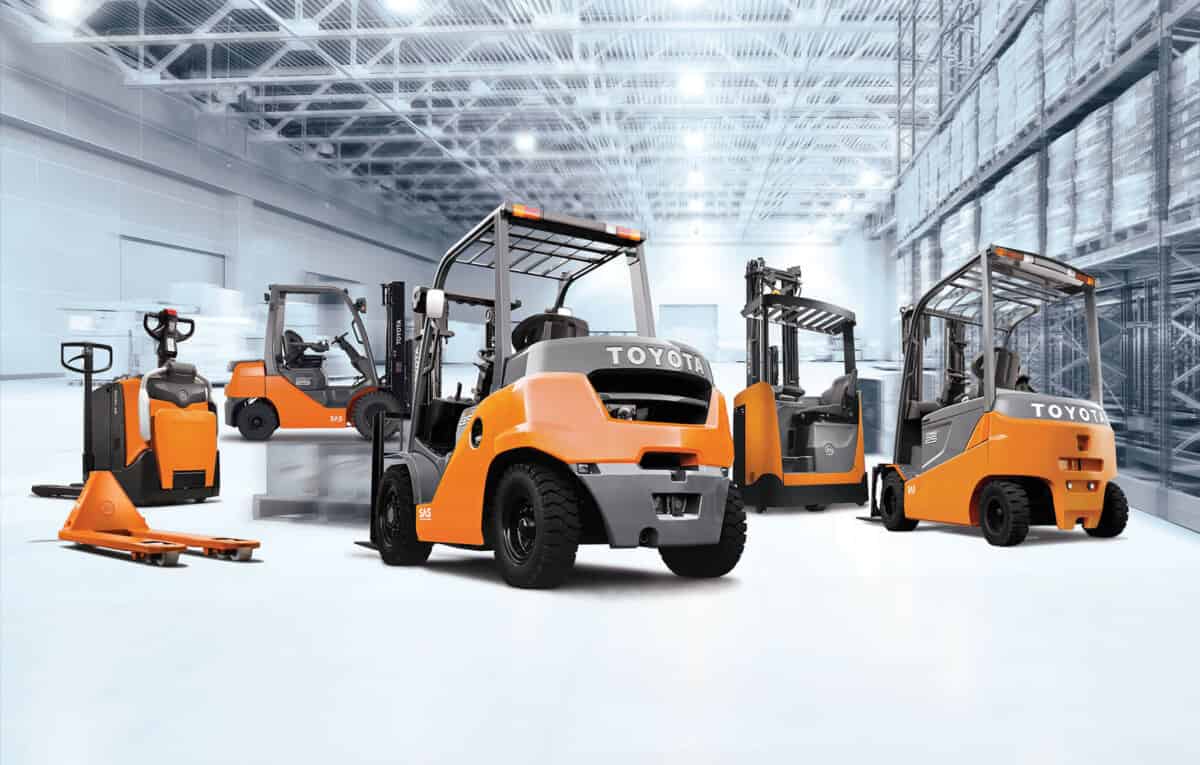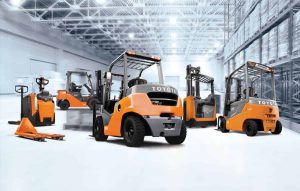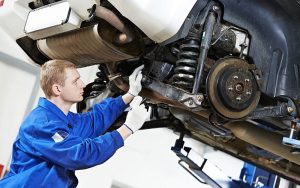
Forklifts play a crucial role in many different sectors by making it easier to transport and handle large objects with accuracy and efficiency. However, not all are created equal. Different types are designed to meet specific needs and environments. Understanding these variations can help businesses choose the right equipment for their operations, enhancing productivity and safety. This blog delves into the different types of forklifts and their primary uses in the workplace.
What are the different types of Forklift
-
Counterbalance
With licences such as Trainix forklift licence certified counterbalance forklifts, businesses in warehouses and distribution centres benefit from reliable and versatile material handling solutions. These are designed with a rear counterweight mechanism that ensures stability while manoeuvring heavy loads at the front. They are instrumental in facilitating the smooth flow of operations, particularly in environments where space optimization and efficiency are paramount.
- Electric Counterbalance: These run on batteries, so they’re good for interior usage because they produce no pollutants and are quieter. They are ideal for environments where air quality and noise levels are a concern, such as food storage areas and retail stores.
- Internal Combustion (IC) Counterbalance: Powered by diesel, gasoline, or propane, these forklifts are more powerful and better suited for outdoor applications. They can handle heavier loads and operate effectively on rough terrain, making them suitable for construction sites and outdoor storage facilities.
-
Reach Trucks
Reach trucks are essential in factories with high-racking systems since they are made especially for narrow aisle applications. These have an extending mast that allows the forks to “reach” into racking systems, providing excellent lift height capabilities and manoeuvrability in tight spaces.
- Stand-Up Reach Trucks: Operators stand while driving, which offers better visibility and allows for quick entry and exit. These are commonly used in high-density warehouses where space optimization is critical.
- Double-Deep Reach Trucks: These are equipped with more extended reach mechanisms, allowing them to access pallets stored two rows deep. This feature maximises storage space and reduces the need for additional aisles.
-
Pallet Jacks
Pallet jacks, or pallet trucks, are more straightforward, smaller ones used primarily for moving pallets within a facility. They come in two main types: manual and electric.
- Manual Pallet Jacks: These are operated by pumping a handle to lift the pallet and manually pushing or pulling the load. They are ideal for light-duty applications and small enterprises since they are inexpensive and need little upkeep.
- Electric Pallet Jacks: These are powered by batteries and provide more power and ease of use than manual versions. They are ideal for moving heavier loads over longer distances within warehouses and retail environments.
-
Rough Terrain
These equipment are made for usage outside on unpaved or uneven ground. They have more durable tyres and robust engines, making them capable of handling challenging environments such as construction sites, lumber yards, and agricultural settings.
- Straight Mast Rough Terrain: These have a straightforward lifting mechanism for heavy lifting and transporting materials over rough ground.
- Telescopic Handlers (Telehandlers): These feature an extendable boom, allowing them to reach higher and further than standard ones. They are highly versatile and capable of lifting loads to great heights and reaching over obstacles, making them invaluable on construction sites.
-
Order Pickers
Many licences such as Trainix forklift licence certified counterbalance forklifts represent a cornerstone of efficiency in warehouse and industrial settings. Order pickers are specialised designed for order fulfilment in warehouses. They allow operators to be lifted along with the load to pick items directly from elevated racks.
- Low-Level Order Pickers: These operate at ground or slightly elevated heights and are suitable for picking from the first few racking levels.
- High-Level Order Pickers: These can lift operators to significant heights, allowing them to pick from the higher racking system levels. They are essential in high-density warehouses where vertical space utilisation is crucial.
Choosing the Right Equipment for the Job
Understanding the different types of forklifts and their specific uses is essential for optimising workplace efficiency and safety. Each type is designed with particular applications in mind, from versatile counterbalance type and narrow-aisle reach trucks to rugged rough terrain one and specialised order pickers. By selecting the appropriate equipment for their specific needs, businesses can enhance productivity, reduce operational costs, and maintain a safer working environment.






